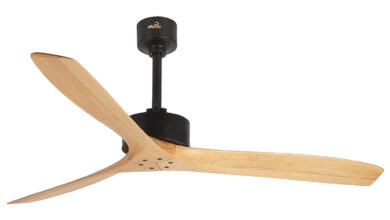Owning the Sky: A Deep Dive into Embraer Phenom 300 Ownership Costs
Soaring through the clouds in a private jet is the epitome of luxury and freedom. But before taking the plunge into Phenom 300 ownership, understanding the true cost of this dream is crucial. This article delves into the financial realities of owning and operating this popular light jet, providing a comprehensive breakdown of various expenses to help you make informed decisions.
Upfront Investment: The Price Tag
The journey begins with the initial purchase price. A new Phenom 300 fuel burns a list price exceeding $11 million, while pre-owned options range from $6 million to $10.7 million. Remember, this is just the starting point. Additional costs like taxes, pre-purchase inspections, and delivery fees add to the initial outlay.
Fixed Costs: The Ongoing Outlay
While the allure of owning a private jet like the Embraer Phenom 300 is undeniable, it’s crucial to understand the financial commitment beyond the initial purchase price. Fixed costs, those incurred regardless of flight activity, form a significant portion of the ownership equation. Let’s delve deeper into the key fixed expenses you’ll need to be prepared for:
1. Hangarage: Finding a safe and secure home for your Phenom 300 is paramount. Hangar fees vary greatly depending on location, size, and amenities offered. Expect to pay anywhere from $40,000 to $100,000 annually. Factors like airport proximity, climate control, and maintenance facilities within the hangar can influence the cost.
2. Insurance: Protecting your multi-million dollar investment is essential. Hull and liability insurance premiums for the Phenom 300 can range from $15,000 to $30,000 annually. These premiums are influenced by various factors like pilot experience, usage frequency, and claims history.
3. Crew Salaries: Operating a Phenom 300 safely and efficiently requires qualified pilots. Budgeting for two full-time pilots is crucial, with combined salaries typically exceeding $300,000 per year. Additional training and certification costs may also need to be factored in.
4. Maintenance: Just like any vehicle, your Phenom 300 requires regular checkups and upkeep. Plan to allocate $150,000 to $200,000 annually for scheduled maintenance, which includes inspections, parts replacements, and fluid changes. Unscheduled repairs can add additional costs, so having a contingency fund is advisable.
Additional Fixed Cost Considerations:
- Management Fees: Hiring a professional aircraft management company can simplify operations and potentially optimize costs, but comes with added management fees.
- Landing Permits: Certain airports require permits for regular landings, leading to annual permit fees.
- Subscriptions: Services like weather information subscriptions or navigation data updates contribute to fixed costs.
Remember, these are estimates, and actual costs can vary depending on your specific circumstances. Carefully evaluate your budget and usage patterns before embarking on the exciting journey of Phenom 300 ownership. By understanding the true cost of ownership, you can make informed decisions and ensure your private jet experience takes flight smoothly.
Variable Costs: Taking Flight
Every flight incurs operational expenses:
- Fuel: The Phenom 300 burns approximately 180 gallons per hour, translating to fuel costs exceeding $800 per hour at current prices.
- Landing Fees: Airports charge landing fees based on weight and aircraft type. Expect to pay $200 to $1,000 per landing.
- Navigation Fees: En route air traffic control fees vary depending on airspace and route. Budget around $100 to $300 per flight hour.
Depreciation: The Value Decline
As with any asset, the Phenom 300 depreciates in value over time. This annual depreciation, typically around 5%, needs to be factored into the overall cost of ownership.
Beyond the Numbers: Additional Considerations
Remember, these are just estimates. Several factors can significantly impact your ownership experience:
- Utilization: Flying more hours spreads fixed costs over a larger base, potentially reducing the cost per flight hour.
- Management: Hiring a professional management company can simplify operations and potentially optimize costs.
- Customization: Upgrading the interior or adding avionics can increase the purchase price and ongoing maintenance costs.
Conclusion: Owning a Dream, Understanding the Reality
Soaring through the clouds in your Embraer Phenom 300 Ownership, unconstrained by commercial schedules and limitations, paints a picture of ultimate freedom and luxury. While owning this light jet undoubtedly opens doors to unparalleled travel experiences, it’s crucial to be grounded in the financial realities before taking flight.
This article has meticulously explored the various cost components of Phenom 300 ownership, including the hefty upfront investment, ongoing fixed costs like hangarage and crew salaries, and variable costs incurred with each flight. Remember, these are just estimates – your specific situation can significantly impact the bottom line.
Utilization is key: Flying more hours spreads the fixed costs over a larger base, potentially reducing the cost per flight hour. Consider your anticipated usage patterns carefully.
Professional management: Hiring a dedicated management company can simplify operations and negotiate better deals, but adds another layer of cost. Weigh the convenience against the financial implications.
Customization comes at a price: Upgrading the interior or avionics can significantly increase the initial purchase price and ongoing maintenance costs. Be mindful of your desired level of personalization.
Owning a Phenom 300 is not just about acquiring a luxurious flying machine; it’s about making a significant financial commitment. Carefully consider your budget, flying habits, and risk tolerance before diving in. By thoroughly understanding the true cost of ownership and making informed decisions, you can ensure your dream of private jet travel takes flight on solid financial ground.
Remember, the journey doesn’t end here. This article serves as a starting point, and consulting with experts like jet management companies and financial advisors is crucial for tailoring the cost analysis to your specific needs and aspirations. Ultimately, owning a Phenom 300 is about balancing your passion for aviation with a clear-eyed understanding of the financial realities. So, dream big, plan meticulously, and soar towards your private aviation adventures with confidence!
FAQs
1. Is fractional ownership a viable alternative?
Yes, fractional ownership allows access to a Phenom 300 for a fraction of the purchase price, but comes with limited usage and potential scheduling challenges.
2. What are the tax implications of owning a Phenom 300?
Consult a tax advisor to understand the specific tax implications based on your location and usage patterns.
3. What are the financing options available for purchasing a Phenom 300?
Several lenders offer aircraft financing, with terms and interest rates varying based on your creditworthiness and the aircraft’s value.
4. How can I minimize the ownership costs of a Phenom 300?
Utilizing your aircraft efficiently, negotiating hangarage and maintenance contracts, and considering fractional ownership are some ways to potentially reduce costs.



